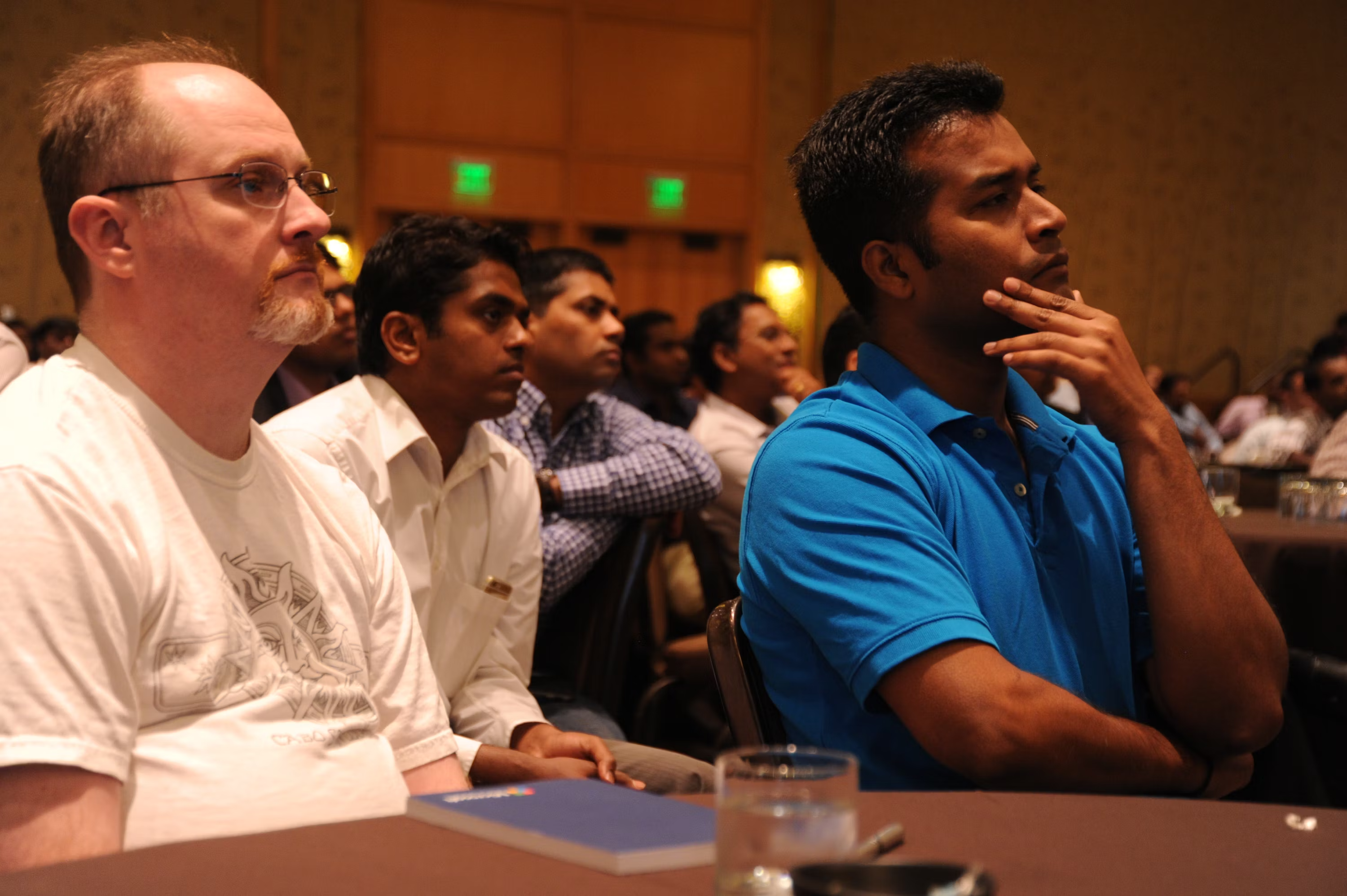Research Dissemination | Best Practices & Tips
- Introduction
- What is research dissemination?
- Purpose of research dissemination
- How do you disseminate research findings?
- Disseminating qualitative research findings
Introduction
Research is just words and ideas until they are shared with the scientific community. Scientific knowledge needs to be discussed and critiqued so that others can build on the research with new inquiries, making it the researcher's responsibility to share their research. As a result, disseminating research findings is the last and most important step in the research process and one of the essential soft research skills that scholars should adequately understand.
In this article, we'll examine the dimensions of research dissemination, from scientific journal publication to research communication. Understanding the various processes for sharing research with the world will enable you to decide the best dissemination plan for your findings.

What is research dissemination?
Research dissemination is any process that involves the presentation of research findings. This is a broad term as it applies to many efforts, both academic and non-academic, with the common characteristic among all of them being the sharing of scientific knowledge.
To be sure, researchers are likely well-aware of the need to present their knowledge at scientific conferences and in academic journals, as research papers and presentations are a cornerstone of research careers. However, research dissemination also refers to other activities such as stakeholder engagement, publishing press releases, and informal peer debriefing. Each of these efforts benefits a different target audience, as well as the researchers disseminating their findings.
Purpose of research dissemination
Insights from research data are only as useful as their reach to and acceptance from the scientific community and the general public. Theories and conceptual frameworks that are known only to the researchers who devise them make little contribution, if any, to the larger world. Instead, this scientific knowledge can be used as further resources to inspire and facilitate future research. To that end, academic and research institutions have established channels of dissemination to ensure that new ideas and knowledge are shared.
From an instrumental standpoint, research dissemination also benefits the researcher in terms of their career development. Many doctoral programs require their students to publish their research in prestigious journals, while announcements for faculty openings often list academic publications as part of the necessary job qualifications. Other academic career accomplishments sought by recruiters and search committees include published books, invited talks, and engagement with the broader community such as blog articles and newspaper editorials.
All of this is to say that the value added by any research is largely determined by the audience that it reaches. This makes research dissemination a critical skill for researchers to have in order to demonstrate the novelty of the research they generate.
How do you disseminate research findings?
Researchers pursue various dissemination efforts in academic and mainstream venues to share their analysis and findings with key audiences. The bottom line is that a thorough study is often promoted through multiple channels that benefit both the researcher and the broader community.
Presentations
Scientific conferences are often the first venue in which academic research is shared. Researchers rely on engagement with other scholars who can comment on and critique the research findings and the data analysis that informs those findings. Moreover, conference presentations are a good opportunity for researchers to network with other scholars and establish potential collaborations for the ongoing research.
Conferences provide instant feedback from a researcher's target audience, and this feedback is often integrated to continue developing the research so that it can be further presented in academic journals and mainstream outlets. Researchers occasionally reference these presentations in their own research if the findings are sufficiently compelling, but the lack of a written or otherwise lasting record makes conference presentations a venue for improving on preliminary research instead of sharing final reports.

Research publications
While conferences are the means for sharing preliminary research findings, journals and other scholarly publications are the primary means through which research is shared. Scholars reference these publications in their own written work more often than they cite conference presentations or articles in mainstream outlets, making journals, academic bulletins, and conference proceedings core venues for contributing to scientific knowledge.
Some forms of research are only available in scholarly publications. A literature review such as a systematic scoping review or other kind of systematic review may typically be found only in academic journals. Narrative research and life history research both provide lengthy descriptions of findings that researchers may consider difficult to reduce to a brief oral presentation at a conference. Whatever kind of study you want to publish, keep in mind that the academic community expects a more extensive and transparent discussion of the research and its findings in a paper than at a conference presentation.
Research papers at prestigious academic journals undergo peer review to ensure the rigor and quality of the research, thus making the publication of a paper a sign that the study is of high quality and worth reading. Sometimes, research is published as an open access article distributed freely to increase the potential audience that could read it without restrictions. Scientific journals often charge sizable fees to publish an article with free access, but this ensures a broader accessibility of the research, as audiences do not need institutional subscriptions to read the study.
Scientific communication
Beyond the established means of research dissemination like conferences and journal articles, there are various other communication strategies researchers may employ to disseminate findings and spread knowledge to the general public. Scientific communication differs from publication in a scientific journal in that it is more oriented toward implications and developments of interest to a more general audience.
Scientific communication through online outlets such as Nature News and EurekAlert often takes the form of a press release meant to grab the attention of the mass media and the broader public. This means that researchers are expected to be able to tailor the presentation of their research to highlight more practical, surprising, or even provocative knowledge that the mainstream community might be more interested in reading.
Mainstream dissemination
Rather than rely on scientific communication, researchers, especially in the social sciences, sometimes appeal directly to the mainstream public, which can include opinion leaders, practitioners, and key stakeholders. More novel or interesting research results tend to garner media coverage from mass media when the findings are likely to invite engagement and interest from general audiences.
This is one reason why researchers have a public-facing, social media presence. Scholars may be interested in sharing their research in mass market books and social media content to engage directly with people who may not have a scientific background but may have a general interest in the topic of discussion. In some circumstances, academic institutions look at public presence among alternative metrics in assessing a researcher's qualifications in promoting research.
Member checking
There are a couple of informal forms of research dissemination that are nonetheless important to the development of research. One such channel is called member checking, where the researcher shares and discusses the data analysis and resulting findings with research participants and other stakeholders.
Member checking is an important step in sufficiently contextualizing qualitative data. However, it is also a useful channel for conveying knowledge back to research participants, policy makers, and key stakeholders, particularly in action research where research findings are used to raise awareness about potential solutions to pressing problems within a given context.
Peer debriefing
Researchers also share their research internally among colleagues and scholars through a process called peer debriefing. The main purpose of debriefing is to raise awareness of any issues in the research process so that future iterations of data collection and analysis within the study can be conducted with greater rigour.
In terms of dissemination, it is also a good way to engage other researchers and foster collaborative partnerships for current and future studies. Think about this form of research dissemination as a means for developing your research for more formal channels such as research papers and presentations.
Data repositories
One final channel of research dissemination focuses on sharing not the findings generated from the data, but the data itself. Researchers sometimes make their data available in public or institutional repositories that are accessible by other researchers who can then use this data in their own studies.
This form of dissemination facilitates scholarly discussion by providing data for researchers to examine and analyze on their own, potentially extending or further contextualizing the research generated by the data, and generating future research through continuing data analysis.
Disseminating qualitative research findings
When it comes to qualitative research, there are various dissemination strategies that are key to expanding the audience that can and should look at your study and its findings.
- Understand your target audience. From the very beginning, think about to whom you are presenting your research. Research that is tailored to target audiences is more likely to be persuasive and compelling. Papers published in scientific journals are expected to focus on theory, while research tailored to mass media should emphasize the immediate implications of new knowledge.
- Define your frameworks concisely. Qualitative research can be challenging to explain to key audiences that are used to getting straight to the point. If your results focus on a proposed theory or concept, your dissemination plan should include presenting the framework in clear, simple terms. Consider naming the aspects of your theory with brief but descriptive keywords for instant impact.
- Highlight attention-grabbing examples. While quantitative research is made persuasive through evidence-based statistics, qualitative research often relies on narratives that researchers use to represent their key findings. Think about how your framework can be represented through telling examples and data visualizations that convey evidence supporting your findings.
- Identify the societal benefits. When research is disseminated in media interviews and popular publications, the delivery of findings should be straightforward and explain how it serves the broader public. Research that is presented to the mass media should de-emphasize the theoretical implications and highlight the immediate and potential impacts this knowledge has on society.
- Maintain discussion of your research. In some ways, research dissemination is an active process that extends beyond papers and presentations. When it comes to career advancement, researchers are increasingly relying on social media and constant engagement with the scientific community and general public with the goal of encouraging regular discussion of research findings.



